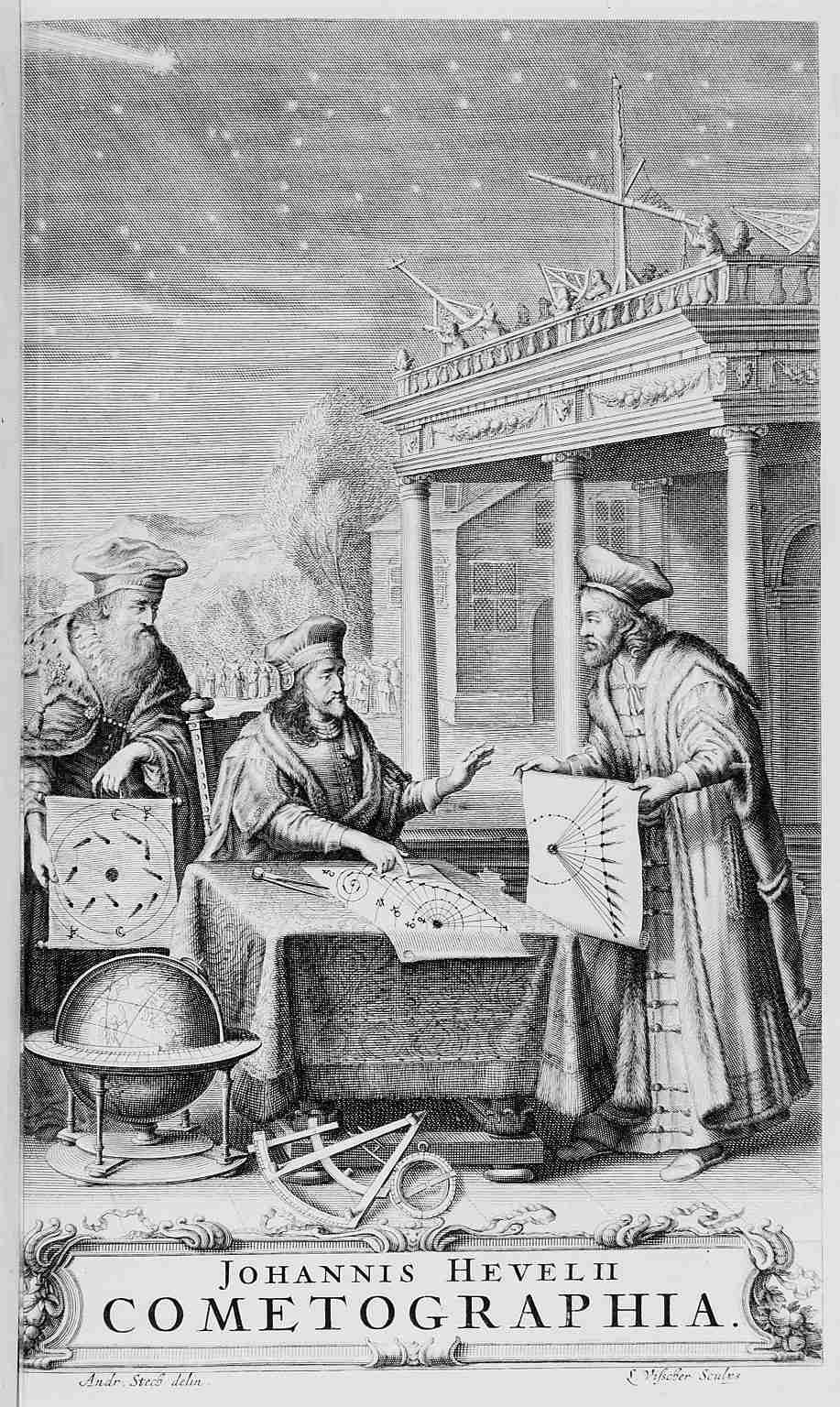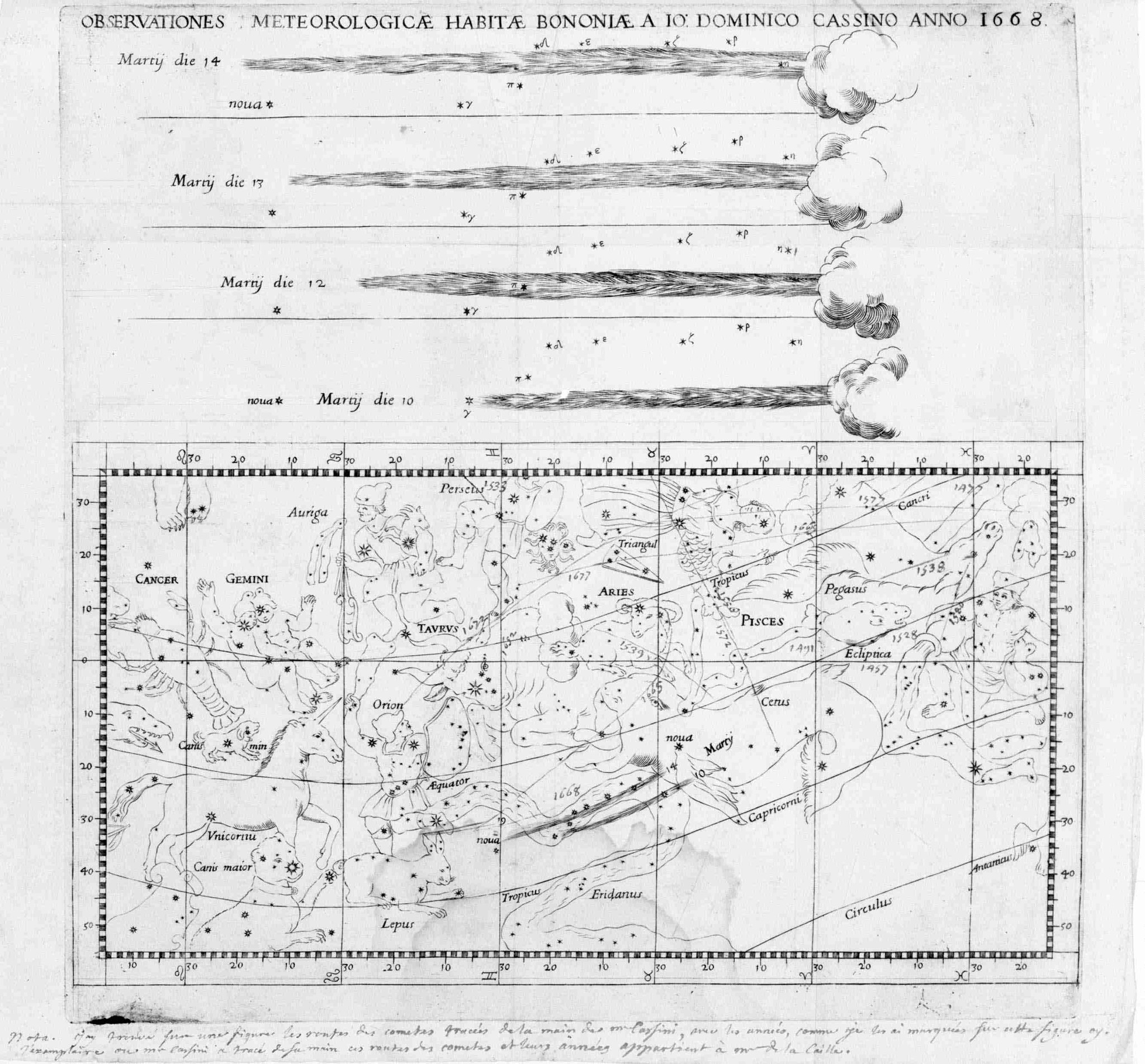Most of the questions related to the path of comets, once admitted that they were very far from Earth.
Mästlin and Tycho Brahe thought that their orbit would be a circle around the Sun (or maybe even an oval for Tycho, who noticed that the movement of comets is not uniform).
Kepler felt that it could not be the case, because one should then see the same comet periodically, something that no one had observed at the time. From this correct premise he concluded erroneously that comets have rather a straight or nearly straight trajectory until dissolved. This was to be the prevailing view throughout the 17th century.
However, the great Polish astronomer Johannes Hevelius (1611-1687), following a few colleagues, suggested in his Descriptio cometae anno 1665 and in its beautiful Cometographia of 1668 that comets may well move on parabolic trajectories, of which the Sun would be a focus. And some considered that comets were coming back regularly near the Earth.

Aristote, à gauche, pense que les comètes sont plus proches que la Lune, Kepler, à droite, leur trouve une trajectoire rectiligne et Hevelius, au centre, leur attribue une orbite parabolique. Frontispice de Johannis Hevelii Cometographia totam naturam cometarum, 1668.
Crédit : Observatoire de ParisThis was the case of Pierre Petit (1598-1667), who was the intendant of Louis XIV’s fortifications before Vauban. He wrote in his Essay on the nature of comets of 1665, written at Louis’s request:
To my advice, Comets are Stars [sic] that move regularly as others around the Sun and around us in such large spaces, but that we see only when they are close-by…
And therefore, why should we not believe that our present Comet [that of 1664] is the same as the large one of 1618, since we notice by observations of its trajectory that it followed almost the same path.
Shortly after, in 1672, Jean-Dominique Cassini (1625-1712), to whom Colbert had entrusted the responsibility of the newly created Paris Observatory, observed a new comet. He noted that the comets of 1665 and 1672 had pretty much followed the same route in the sky. Then he noticed that some comets that had appeared at different times had fairly similar trajectories in the sky, and may well have been the same object. No luck: none of the couples mentioned by Cassini in fact corresponded to the same comet. But the idea of the existence of periodic comets was in the air, and the English astronomer Edmond Halley (1656-1742) was going to put it into practice.

Observations du passage de la comète de 1668 à Bologne tiré de Spina celeste meteora observata in Bologna nel mese di marzo 1668 / Jean-Dominique Cassini, 1668
Crédit : Observatoire de Paris

